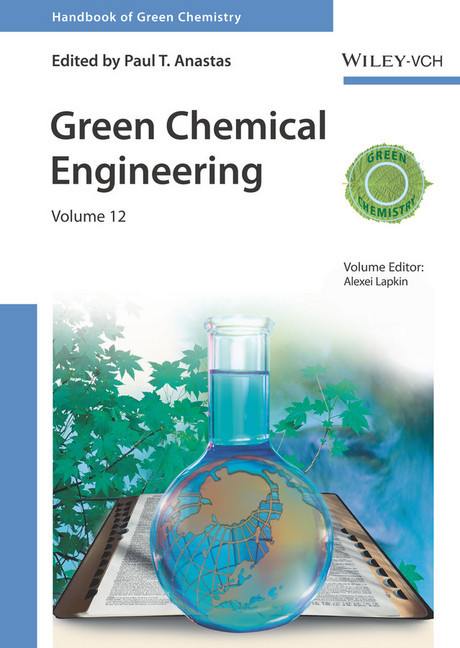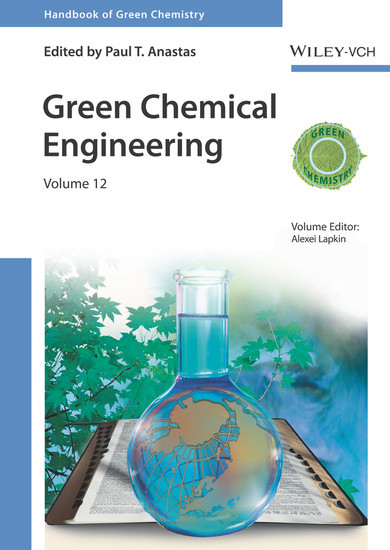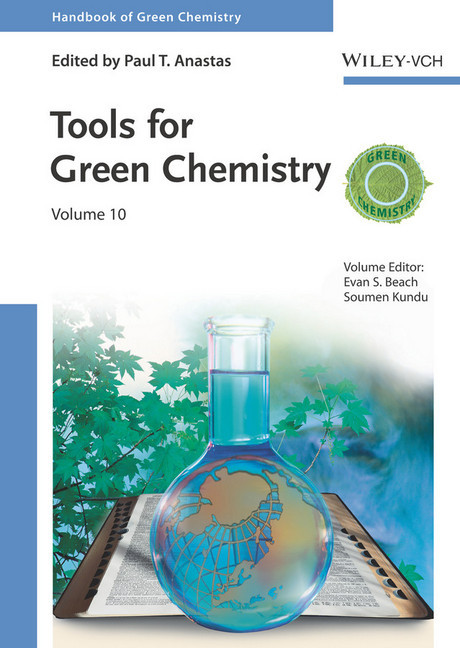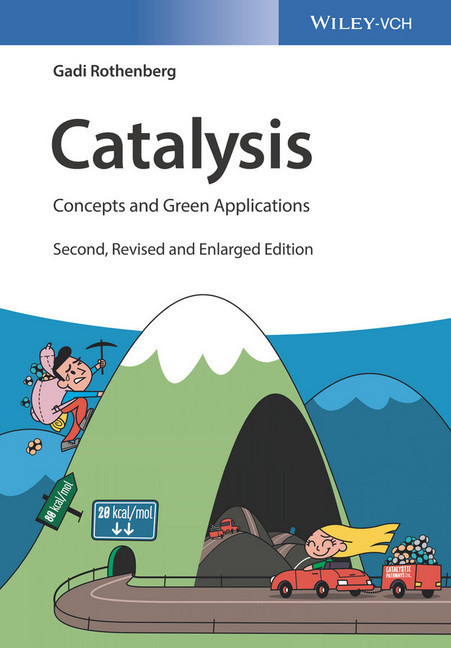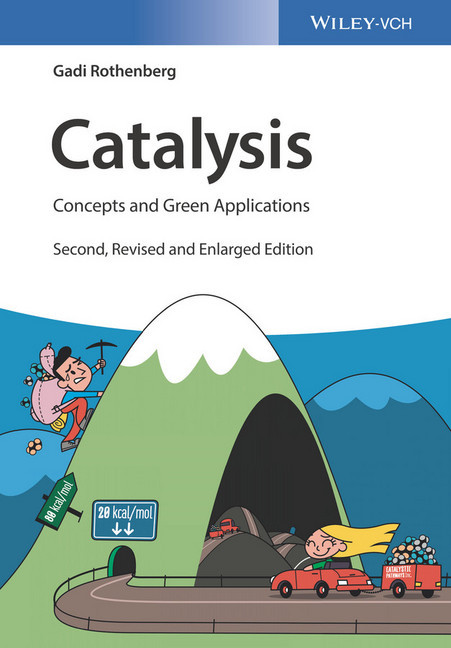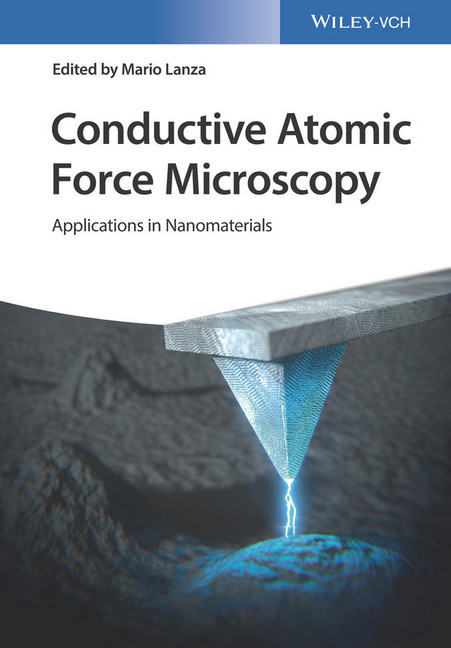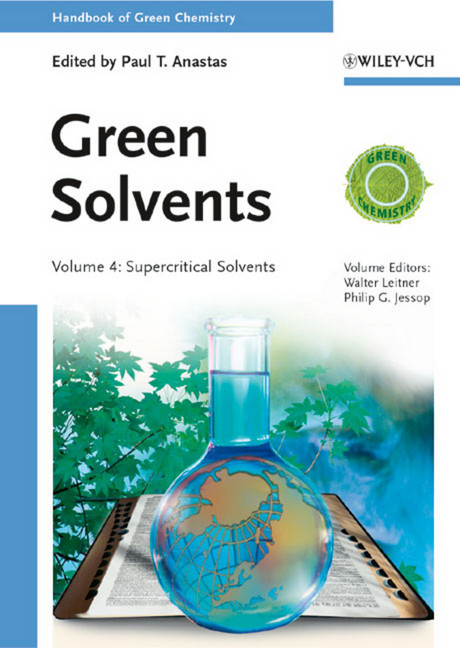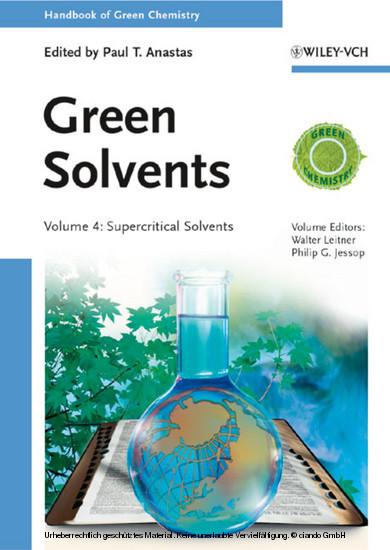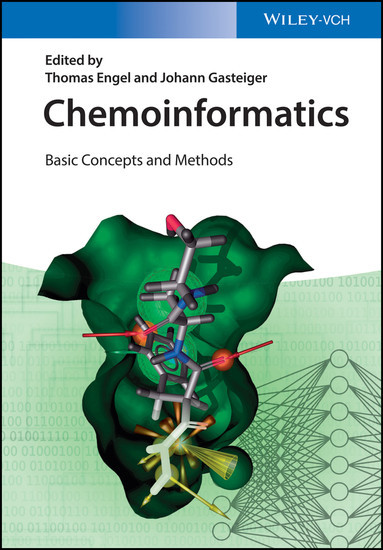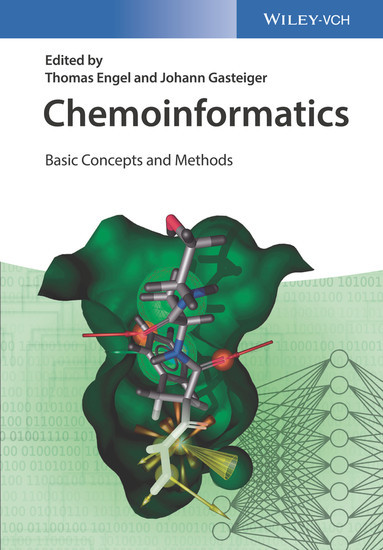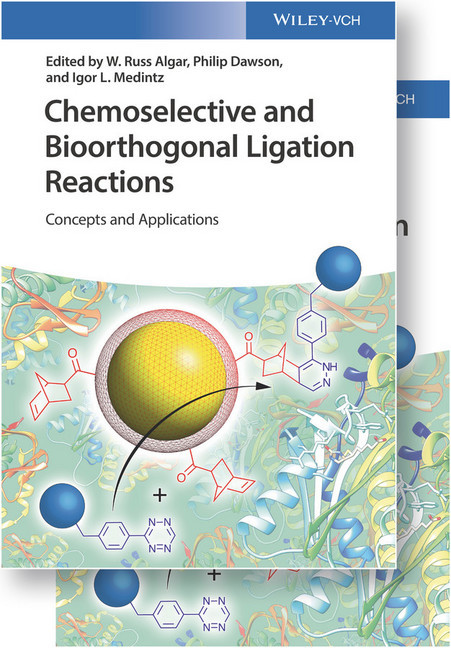Green Chemical Engineering, Volume 12
Green chemistry and chemical engineering belong together and this twelth volume in the successful Handbook of Green Chemistry series represents the perfect one-stop reference on the topic.
Written by an international team of specialists with each section edited by international leading experts, this book provides first-hand insights into the field, covering chemical engineering process design, innovations in unit operations and manufacturing, biorefining and much more besides.
An indispensable source for every chemical engineer in industry and academia.
Paul T. Anastas joined Yale University as Professor and serves as the Director of the Center for Green Chemistry and Green Engineering at Yale. From 2004-2006, Paul Anastas has been the Director of the Green Chemistry Institute in Washington, D.C. Until June of 2004 he served as Assistant Director for Environment at e White House Office of Science and Technology Policy where his responsibilities included a wide range of environmental science issues including furthering international public-private cooperation in areas of Science for Sustainability such as Green Chemistry. In 1991, he established the industry-government-university partnership Green Chemistry Program, which was expanded to include basic research, and the Presidential Green Chemistry Challenge Awards. He has published and edited several books in the field of Green Chemistry and one of the inventors of the 12 principles of Green Chemistry.
Alexei Lapkin is Professor of Sustainable Reaction Engineering at the Univeristy of Cambridge. He received his PhD in Chemical Engineering at the University of Bath in 2000 and held a Lecturer position until 2009. He then moved to University of Warwick, School of Engineering, to help to develop their research programme in Chemical Engineering. In 2013 he took over his position in Cambridge.
Written by an international team of specialists with each section edited by international leading experts, this book provides first-hand insights into the field, covering chemical engineering process design, innovations in unit operations and manufacturing, biorefining and much more besides.
An indispensable source for every chemical engineer in industry and academia.
Paul T. Anastas joined Yale University as Professor and serves as the Director of the Center for Green Chemistry and Green Engineering at Yale. From 2004-2006, Paul Anastas has been the Director of the Green Chemistry Institute in Washington, D.C. Until June of 2004 he served as Assistant Director for Environment at e White House Office of Science and Technology Policy where his responsibilities included a wide range of environmental science issues including furthering international public-private cooperation in areas of Science for Sustainability such as Green Chemistry. In 1991, he established the industry-government-university partnership Green Chemistry Program, which was expanded to include basic research, and the Presidential Green Chemistry Challenge Awards. He has published and edited several books in the field of Green Chemistry and one of the inventors of the 12 principles of Green Chemistry.
Alexei Lapkin is Professor of Sustainable Reaction Engineering at the Univeristy of Cambridge. He received his PhD in Chemical Engineering at the University of Bath in 2000 and held a Lecturer position until 2009. He then moved to University of Warwick, School of Engineering, to help to develop their research programme in Chemical Engineering. In 2013 he took over his position in Cambridge.
1;Handbook of Green Chemistry: Green Chemical Engineering;1 2;Contents;7 3;About the Editors;15 4;List of Contributors;17 5;Preface;21 6;Chapter 1: Chemical Engineering Science and Green Chemistry - The Challenge of Sustainability;23 6.1;1.1 Sustainability Challenge for the Chemical Industry;23 6.2;1.2 From Green to Sustainable Chemistry;27 6.3;1.3 Chemical Engineering Science for Sustainability;29 6.4;1.4 Trends in Chemical Engineering Science;31 6.5;1.5 Topics Covered in This Book;33 6.6;Acknowledgment;35 6.7;References;35 7;Part One: Molecular Engineering of Materials, Reactions, and Processes;39 7.1;Chapter 2: Recent Advances in the Molecular Engineering of Solvents for Reactions;41 7.1.1;2.1 Introduction;41 7.1.2;2.2 Solvent Effects on Reactions;44 7.1.3;2.3 Design or Selection of Solvents for Chemical Reactions;48 7.1.3.1;2.3.1 Model-Based Screening Methods;49 7.1.3.2;2.3.2 Generate-and-Test Methods;50 7.1.3.3;2.3.3 Optimization-Based Methods;52 7.1.3.4;2.3.4 Discussion;56 7.1.4;2.4 A Case Study;57 7.1.5;2.5 Conclusions;60 7.1.6;Acknowledgments;60 7.1.7;References;61 7.2;Chapter 3: Hierarchically Structured Pt and Non-Pt-Based Electrocatalysts for PEM Fuel Cells;69 7.2.1;3.1 Introduction;69 7.2.2;3.2 Pure Hollow Pt Nanoparticles;71 7.2.3;3.3 Hollow Pt Metal Alloys;73 7.2.3.1;3.3.1 PtAu;74 7.2.3.2;3.3.2 PtAg;75 7.2.3.3;3.3.3 PtCo;78 7.2.3.4;3.3.4 PtNi;80 7.2.3.5;3.3.5 PtRu;81 7.2.3.6;3.3.6 PtPd;83 7.2.3.7;3.3.7 PtCu;84 7.2.4;3.4 Non-Pt Alloy Nanostructures;85 7.2.5;3.5 Conclusions and Outlook;86 7.2.6;Acknowledgment;87 7.2.7;References;87 7.3;Chapter 4: New Frontiers in Biocatalysis;95 7.3.1;4.1 Introduction;95 7.3.2;4.2 Recent Advances in Biocatalysis;96 7.3.3;4.3 Biocatalytic Retrosynthesis;97 7.3.4;4.4 Process-Driven Protein Engineering;102 7.3.5;4.5 Process Developments;105 7.3.5.1;4.5.1 Continuous Processes;105 7.3.5.2;4.5.2 Kinetic Analysis;106 7.3.6;4.6 Future Perspectives;106 7.3.7;References;107 8;Part Two: Innovations in Design, Unit Operations, and Manufacturing;109 8.1;Chapter 5: Conceptual Process Design and Process Optimization;111 8.1.1;5.1 Introduction;111 8.1.2;5.2 Mathematical Background;111 8.1.2.1;5.2.1 System of Nonlinear Equations;112 8.1.2.2;5.2.2 Nonlinear Programming (NLP);112 8.1.2.3;5.2.3 Mixed Integer Programming;114 8.1.3;5.3 Synthesis;115 8.1.3.1;5.3.1 Reactor Networks;115 8.1.3.2;5.3.2 Separation Systems;117 8.1.3.3;5.3.3 Overall Flowsheets;119 8.1.4;5.4 Superstructure-Based Techniques;123 8.1.4.1;5.4.1 Heat Exchange Networks;123 8.1.4.2;5.4.2 Process Flowsheet Optimization;125 8.1.5;5.5 Integrated Process Design, Operation, and Control;127 8.1.6;5.6 Water and Energy Processes;127 8.1.7;5.7 Conclusions and Outlook;129 8.1.8;References;129 8.2;Chapter 6: Development of Novel Multiphase Microreactors: Recent Developments and Future Challenges;137 8.2.1;6.1 Principles and Features;137 8.2.1.1;6.1.1 Continuous Phase Multiphase Microreactors;137 8.2.1.1.1;6.1.1.1 Falling Film Microreactor;137 8.2.1.1.2;6.1.1.2 Mesh Contactor;138 8.2.1.2;6.1.2 Dispersed Phase Multiphase Microreactors;138 8.2.1.2.1;6.1.2.1 Segmented Flow Microreactors;138 8.2.1.2.2;6.1.2.2 Microstructured Packed Beds;139 8.2.1.2.3;6.1.2.3 Prestructured Microreactors;140 8.2.1.2.4;6.1.2.4 Foam Microreactors;142 8.2.1.2.5;6.1.2.5 Microreactors with Fibrous Internal Structures;142 8.2.2;6.2 Experimental Practice;143 8.2.2.1;6.2.1 Flow Regimes;143 8.2.2.1.1;6.2.1.1 Capillary Microreactors;143 8.2.2.1.2;6.2.1.2 Structured Packed Beds;144 8.2.2.2;6.2.2 Dispersion and Holdup in Microstructured Packed Bed Reactors;145 8.2.2.2.1;6.2.2.1 Liquid Holdup;145 8.2.2.2.2;6.2.2.2 Hydrodynamic Dispersion;146 8.2.3;6.3 Modeling Features;147 8.2.3.1;6.3.1 Hydrodynamics;147 8.2.3.1.1;6.3.1.1 Falling Films Microreactors;147 8.2.3.2;6.3.2 Pressure Drop in Capillary Microreactors;149 8.2.3.2.1;6.3.2.1 Gas-Liquid Microreactors;149 8.2.3.2.2;6.3.2.2 Liquid-Liquid Microreactors;152 8.2.3.3;6.3.3 Mass Transfer;153 8.2.3.3.1;6.3.3.1 Capillary Microreactors;153
Anastas, Paul T.
| ISBN | 9783527688418 |
|---|---|
| Artikelnummer | 9783527688418 |
| Medientyp | E-Book - PDF |
| Copyrightjahr | 2018 |
| Verlag | Wiley-VCH |
| Umfang | 396 Seiten |
| Sprache | Englisch |
| Kopierschutz | Adobe DRM |

